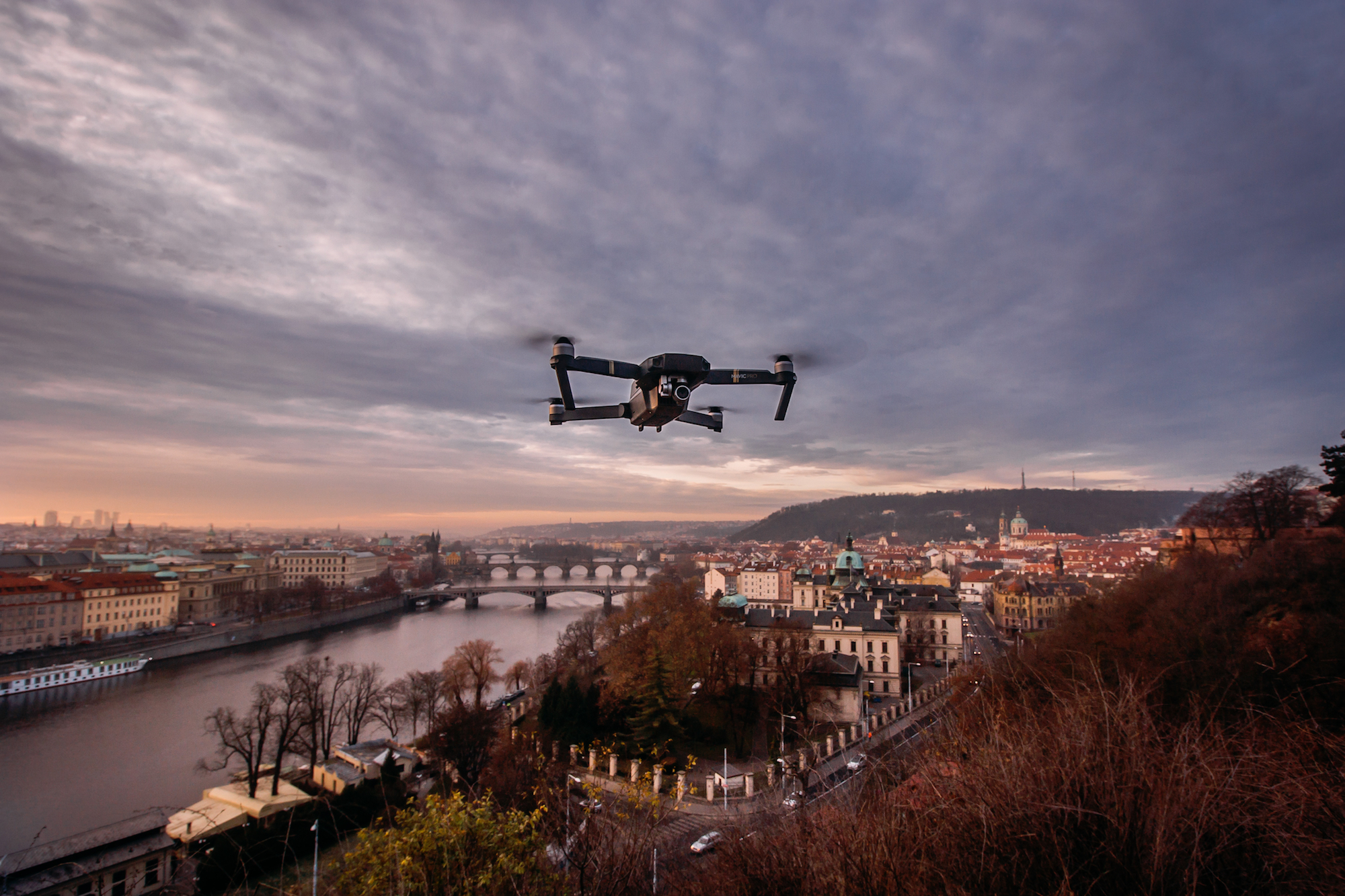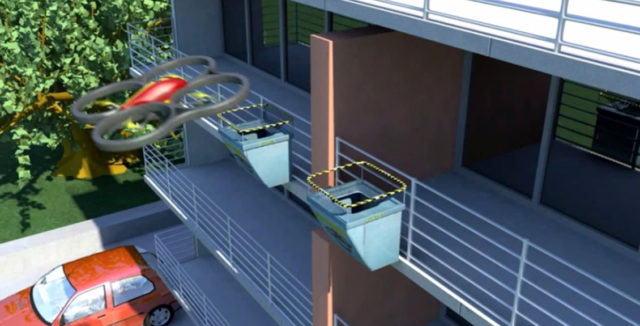
Urban Deliveries with Drones
December 14, 2015 — Blog
It feels like such a long time ago but in 2012 I bought my first drone. Back then drones were not an easy straight out of the box flying experience. Rather, drones came in many parts, which had to be carefully configured before they could become flying machines.
This technical process had some value; it forced me to learn the basics of how the parts worked together and how to fix a part when it failed. However the greatest benefit my first drone gave me was a world of inspiration for the possibilities of this new age machine. I was on the cusp of a drone revolution, a service revolution that many were not even considering. Only a select few people including Chris Anderson, founder of 3D Robotics had the same vision of the future. Even today, it has still not dawned on many people that drones will become an integrated part of our everyday lives much as cars are today.
As I flew my newly built drone around, my mind began to imagine how these drones could be used in efficient logistics. The enormous cost to transport any item from point A to point B bothered me. Up to 70 per cent of delivery costs can be attributed to the “last mile”. This cost usually manifests in the form of a ‘delivery person’ driving around in a light vehicle to each delivery point with his/her cargo. This endeavor usually fails with no one at home to accept the delivery. For me there was no reason why the drone that I had just built could not successfully automate this task and reduce the time and monetary costs of delivery by a large margin.
So why does having drones make deliveries make sense?
From the outset, the set-up cost is reduced. The cost of a van and a man are in the tens of thousands of dollars. Drones on the other hand are increasingly affordable! Drone technology is also inexpensive to utilize. It has been calculated that the running cost of drones per 10 km is between 20 – 70 cents – a 5x saving over traditional trucks.
Drones also feature the element of time efficiency traveling as fast “as the crow flies”. Today, modern drones are capable of achieving speeds of up to 100 km/h and are not dependent on roads and do not encounter traffic. Drones are also autonomous and reliable, there is very little an operator needs to do after placing the package on the drone and telling it where to go.
Consider what a world would be like with dozens if not hundreds of drones flying about making deliveries. First of all it would reduce the number of light delivery vehicles from the roads, which would present a number of benefits. Fewer trucks on the roads means less traffic, safer roads and lower carbon emissions. An additional benefit of more drones and fewer vehicles is the decreased wear and tear on urban roads, reducing the need for regular maintenance upgrades.
Dozens of multi-functional drones flying about delivering packages could be diverted to other tasks. Drones fitted with sensors could provide live updates for city maps or transport emergency service packages to accident sites. Mobile phone and CCTV coverage could also be enhanced with the use of drones.
And if we think further, drones which travel in straight lines across cities could change the way restaurant food is delivered. For example, my hometown in Australia has a population of 200 000 and nine outlets of a well known fast food chain. These outlets are spread across the city in order to give maximum coverage within the urban area. They have calculated that their customers are only willing to travel a maximum distance to get their favorite snack. Fast food outlets have offered home delivery to expand this coverage. If drone deliveries could become a reality, the area that is serviced by each outlet could be substantially expanded. One outlet could potentially service the whole city, removing the need to have a large number outlets spread out in different locations. When you multiply this potential efficiency across all the fast food chains across the city you will start to free up a lot of land space and resources.
You may be thinking, what will happen to all the jobs provided by these redundant outlets? But there is good news, imagine a small independent take away restaurant in a city. Currently its geographical footprint restricts its growth and earning capacity. It can only service people nearby. If drone deliveries became available, it would increase its reach, earning capacity as well as its employment capacity.
Now drone deliveries sound good for business, good for the environment and good for cities but how are they good for the urban citizen? Consider this scenario.
A new father is alone at home with his daughter. He has just put her to sleep and realizes that he is all out of baby formula. Traditionally he would have to wait until his daughter was awake to then load her and her things into the car, negotiate traffic, find parking, unload the baby and her things, negotiate the shopping center, purchase the formula and then reverse the process for the trip home. With drone deliveries the formula could be ordered online and arrive at his home before the baby wakes.
I am sure you could think of a time where you could have benefitted from drone deliveries right now!
So how are we going to achieve this drone utopia? Firstly there is a need to address some of the problems with current drones and their delivery mechanisms. The first problem is that drones still require the receiver of the package to have a yard/open space for delivery. The reason for this is that affordable GPS systems used to navigate drones can be inaccurate up to five meters. Thus currently, delivery location needs to be at least a 10×10 meter space, which is not ideal if you live in an apartment or in a large city where space is at a premium. The second problem is that drones still come into contact with the ground in some way, either by dropping the package down on a string or landing in an open space. This presents a safety concern, as the spinning blades could come into contact with humans or animals. The packages are also currently left upon delivery making them susceptible to weather damage or theft.
The system BLKTATU proposes is a net system, hung from the side of your building with a lockable container at the bottom for the drone to drop the packages into. This would keep the drone at a safe distance from people, while still keeping the package from safe from harm.
However, although this may seem like a simple solution, we still had to overcome the problem of GPS inaccuracy. So how did we solve this? In basic terms we gave the drone a set of eyes and the net a set of markers. The drone is given the package to deliver and flies to the known GPS coordinates of the net. The drone recognises the net markers and performs a set of calculations to identify where it is in relation to the net. The markers also tell the drone where the exact center of the net is with millimeter accuracy. From here the drone can maneuver above the net and complete the delivery safely and accurately. This method, I hope, will allow us to develop a viable future for drone deliveries, creatively using limited space in cities to enhance logistical requirements of everyday life.
